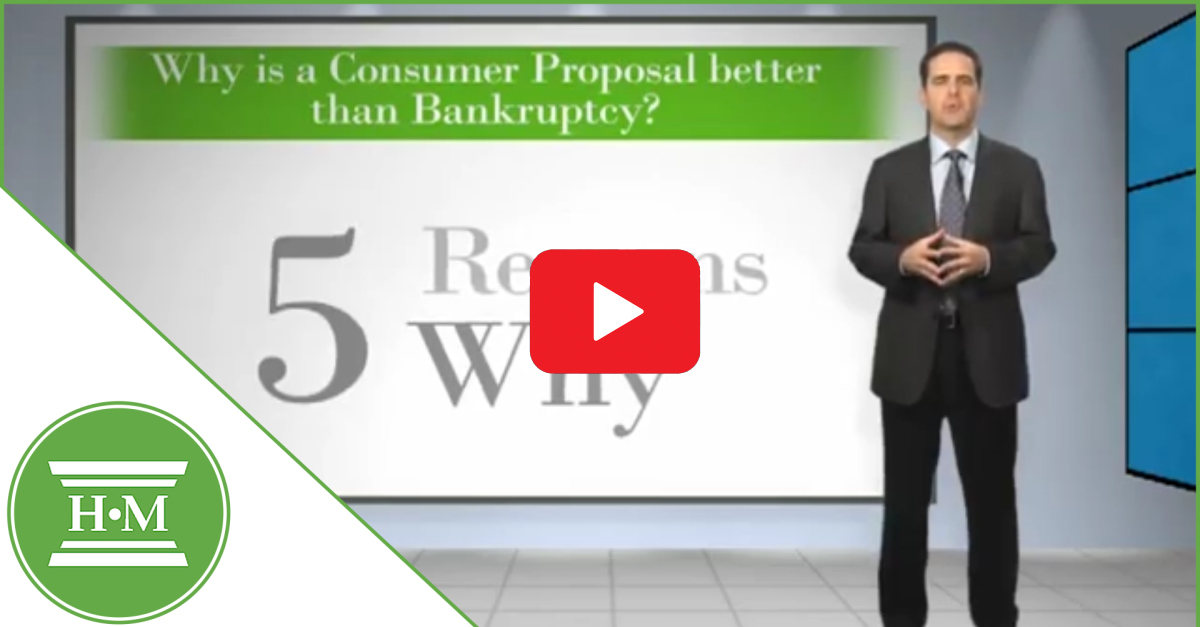When you’re struggling with debt, both consumer proposals and bankruptcy offer legal protection from creditors and a path to debt relief. A Canada consumer proposal allows you to pay a portion of your debts and keep your assets while making fixed monthly payments, typically lower than bankruptcy payments. Bankruptcy eliminates your debts but requires surrendering certain assets and possibly making surplus income payments.

How Consumer Proposals and Bankruptcy Compare
Qualifying for Each Option
A consumer proposal is available if you owe less than $250,000 in unsecured debt (excluding your mortgage). Your proposal must be accepted by the majority of your creditors.
Bankruptcy requires owing at least $1,000 and being unable to pay your debts as they come due. Any Canadian resident meeting these criteria can file bankruptcy.
Costs and Payment Structure
Consumer proposal payments are based on a negotiated debt settlement with creditors, typically starting at 20% of your total debt. Once agreed upon, your monthly payment remains fixed regardless of income changes.
Bankruptcy costs vary based on your income. If you earn above a certain threshold, you’ll make surplus income payments, potentially increasing your overall cost.
Impact on Your Assets
A key advantage of consumer proposals is asset protection – you keep everything you own, including:
- Your home equity
- Vehicles
- Investments including all RESPs, RRSPs
- Tax refunds
- Personal belongings
In bankruptcy, you must surrender non-exempt assets and tax refunds. While provincial bankruptcy exemptions allow you to keep basic household items and a vehicle below a certain value, other assets may be sold to repay creditors.
Length of Process
Consumer proposals can last up to 5 years, with the option to pay off early. Your payment term is negotiated as part of your proposal.
A first bankruptcy typically lasts 9 months, extending to 21 months if you have surplus income. Second bankruptcies last at least 24 months, or 36 months with surplus income.
Required Duties
A consumer proposal requires less ongoing duties than bankruptcy. In a proposal you’ll make your monthly payments and attend two credit counselling sessions. No monthly income or expense reporting is needed.
Comparing Credit Rating Impact
Consumer Proposal Credit Impact
A consumer proposal results in an R7 credit rating, remaining on your credit report for 3 years after completion or 6 years from filing, whichever comes first. A consumer proposal generally allows for faster credit score recovery than bankruptcy.
Bankruptcy Credit Impact
Bankruptcy results in an R9 rating, staying on your credit report for 7 years after completion for a first bankruptcy.
|
|
Consumer Proposal |
First time bankruptcy |
|
Qualifications |
Maximum $250,000 unsecured debt excluding home mortgage |
Minimum $1,000 debts |
|
Cost |
Negotiated settlement Generally starts at 30% of debt |
Statutory calculation Based on income and assets |
|
Length |
Up to 5 years Can be paid off early |
9 months or 21 months based on income |
|
Assets |
Keep all assets including tax refund |
Surrender assets except those exempt by law |
|
Credit Rating |
Earlier of 3 years from completion or 6 years from filing |
7 years from completion |
Why Choose a Consumer Proposal?
Consumer proposals offer several advantages:
- Keep all your assets
- Fixed monthly payments regardless of income changes
- No monthly reporting requirements
- Retain tax refunds
- Earlier credit rating improvement
- More flexible payment terms
- Not considered bankruptcy for professional designations
Similarities Between Bankruptcy and Consumer Proposal
Both debt solutions require:
- Working with a Licensed Insolvency Trustee (LIT)
- Attending two credit counselling sessions
- Full disclosure of assets and debts
- Stopping credit card use
Both options provide creditor protection under the Bankruptcy and Insolvency Act, stopping wage garnishments, collection calls, and other creditor actions. They eliminate unsecured debts including credit cards, lines of credit, personal loans, payday loans, tax debt, and student loans after seven years.
Your path to debt relief starts with understanding your options. As Licensed Insolvency Trustees, we analyze your financial situation to determine whether a consumer proposal or bankruptcy better suits your needs.
Each case requires careful examination to determine the most viable debt relief option, whether it’s bankruptcy, a consumer proposal, debt consolidation, or a debt management plan. We consider factors such as surplus income, assets, total debt, and associated costs.
At Hoyes Michalos, we have helped countless Ontarians resolve debt problems through a consumer proposal, personal bankruptcy, or other solution. Contact us today for a free consultation by phone, email, or in person



